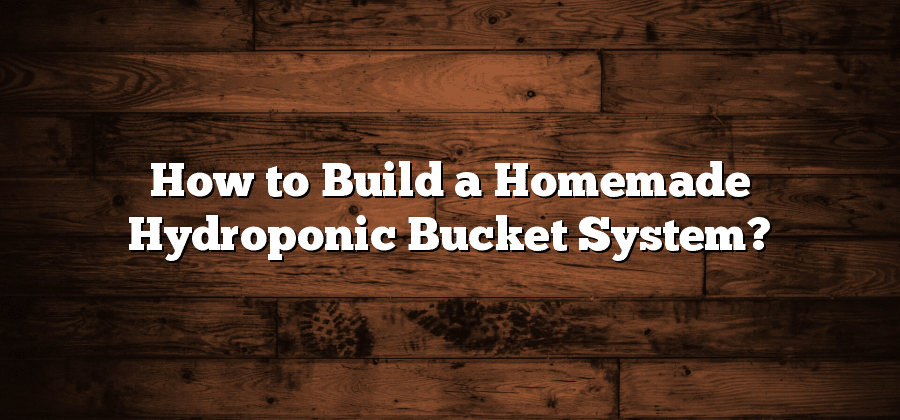Understanding Hydroponics and its Benefits
Hydroponics, a soil-less method of growing plants, has gained significant popularity among both commercial growers and hobbyists. With this innovative approach, plants are grown in a controlled environment where nutrients and water are delivered directly to their roots. The benefits of hydroponics are numerous, making it a preferred choice for modern agriculture.
One of the primary advantages of hydroponics is its ability to maximize space utilization. Unlike traditional farming, hydroponic systems can be set up vertically, allowing growers to cultivate plants in multiple layers. This vertical orientation maximizes the use of available space, making it ideal for urban farming or areas with limited land resources. Additionally, since nutrients are delivered directly to the roots, plants can be placed closer together, further increasing the yield per square foot.
Choosing the Right Materials for Your System
One of the most important steps in setting up a hydroponic system is choosing the right materials. The success of your system depends greatly on the quality and durability of the materials you select. When it comes to hydroponics, it’s crucial to opt for materials that are resistant to corrosion, as they will be constantly exposed to water and nutrient solutions. Additionally, it’s essential to choose materials that are non-toxic and UV resistant, as they will be in direct contact with your plants. Some commonly used materials for hydroponic systems include PVC pipes, net pots, grow trays, and air pumps.
PVC pipes are popular for their affordability and versatility. They can be easily cut and connected to create the desired layout for your system. Additionally, they are durable and resistant to corrosion, making them a suitable choice for long-term use. Net pots, on the other hand, are ideal for supporting plants in the system. They allow the roots to grow freely, ensuring proper nutrient absorption. When selecting net pots, it’s important to choose ones made from food-grade and UV resistant materials, as this will ensure your plants’ health and longevity.
Preparing the Bucket for Hydroponic Setup
To ensure a successful hydroponic setup, it is crucial to properly prepare the bucket that will serve as the growing container. The first step is to clean and sanitize the bucket thoroughly to remove any potential contaminants. This can be done by using a gentle detergent and warm water, followed by a rinse of disinfectant solution. It is important to note that bleach should be avoided as it can be harmful to plants. Once the bucket is clean, it is recommended to drill small holes near the bottom for drainage, as excess water can lead to root rot. Additionally, drilling holes around the sides of the bucket will provide adequate aeration for the root system.
Creating the Water Reservoir and Nutrient Solution
To begin the process of creating a water reservoir and nutrient solution for your hydroponic system, you will need to gather the necessary materials. Firstly, you will require a large container or tank that can hold the desired amount of water. Additionally, you will need a water pump to circulate the water and an air stone or diffuser to supply oxygen to the roots of the plants.
Before filling the container with water, it is crucial to ensure that it is clean and free from any contaminants. Clean the container thoroughly with mild soap and water, rinsing it well to remove any residue. Once the container is clean, you can proceed to fill it with water. It is important to use good quality water for your hydroponic system, as any impurities can negatively affect the health of your plants. Consider using reverse osmosis water or filtered tap water to ensure the best results.
Assembling the Irrigation System and Drip Lines
Once you have all the necessary components ready, it’s time to assemble the irrigation system and drip lines for your hydroponic setup. Start by connecting the main water supply line to the water reservoir. Ensure that the connection is tight to avoid any leakage.
Next, attach the drip lines to the main supply line. Carefully cut the drip lines to the desired length, ensuring that each plant will have adequate access to water and nutrients. It is important to use the appropriate connectors to secure the drip lines in place, preventing any potential leaks.
After the connections are secure, check for any possible leaks or drips. It is essential to have a properly functioning irrigation system to ensure efficient and effective nutrient distribution to your plants. Take your time to inspect all the connections and make any necessary adjustments or fixes.
Remember, a well-assembled and functioning irrigation system is crucial to the success of your hydroponic setup. It will ensure that your plants receive the right amount of water and nutrients, promoting healthy growth and optimal yields.






